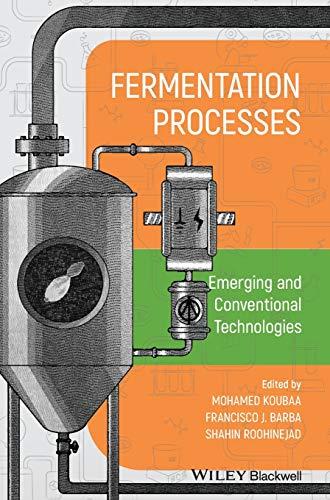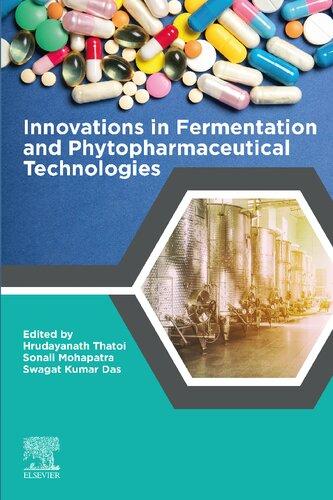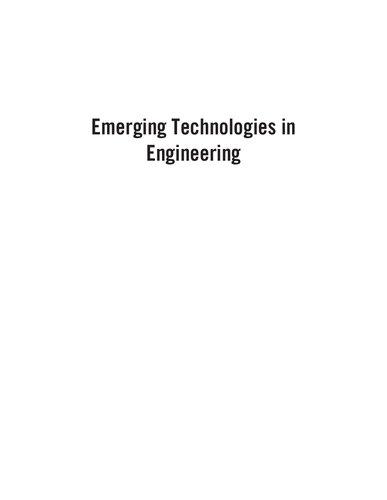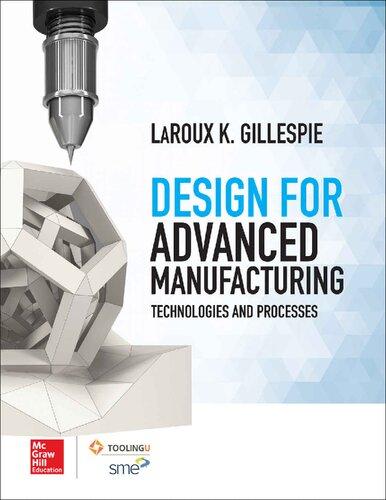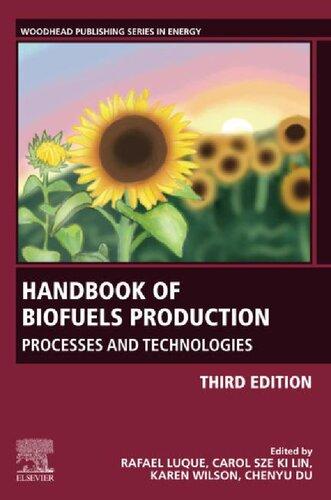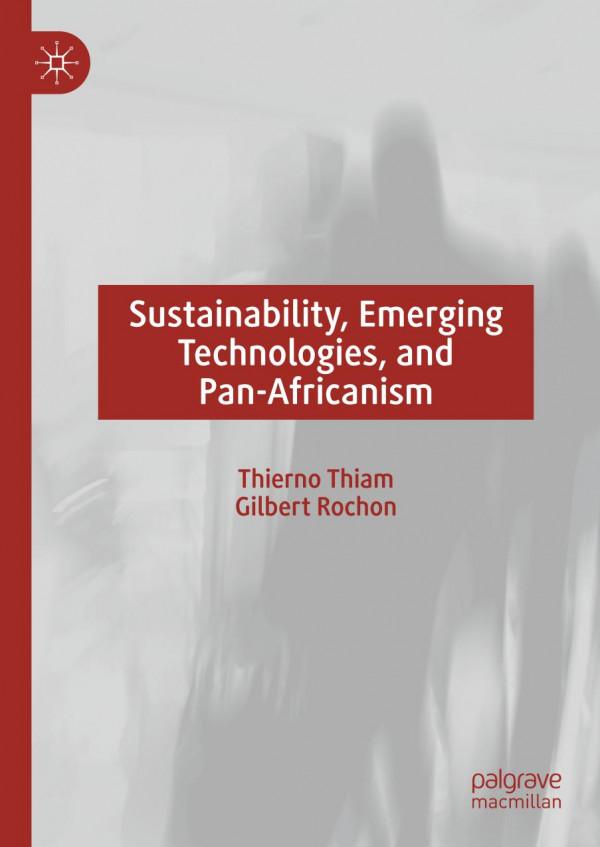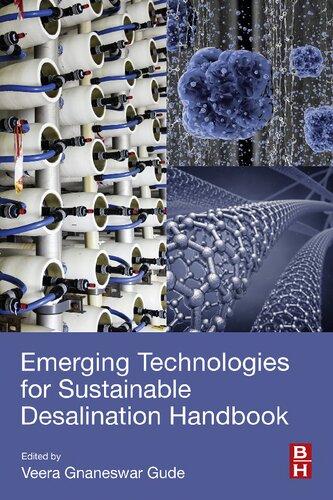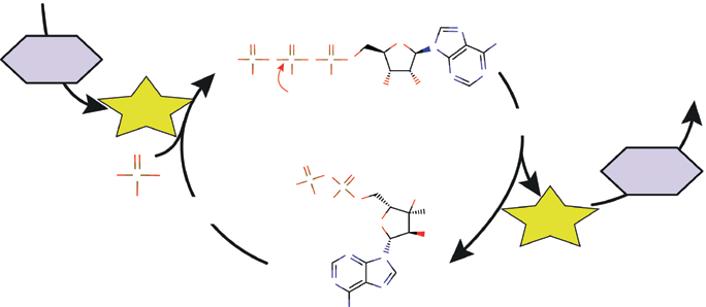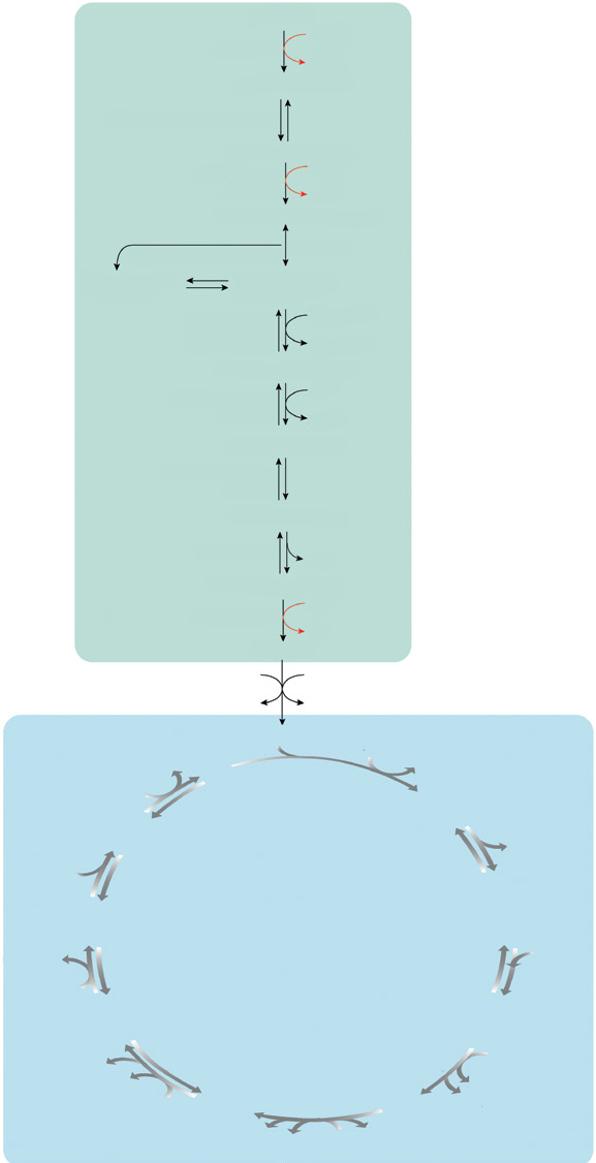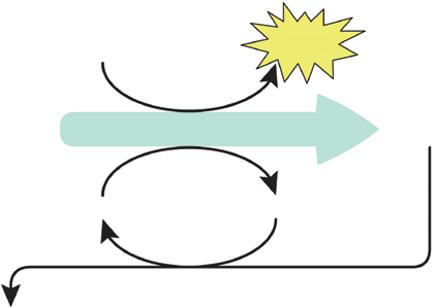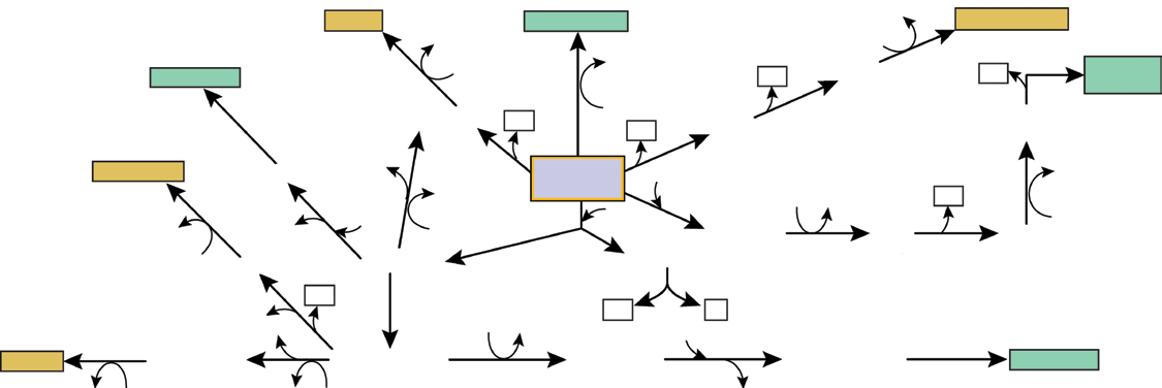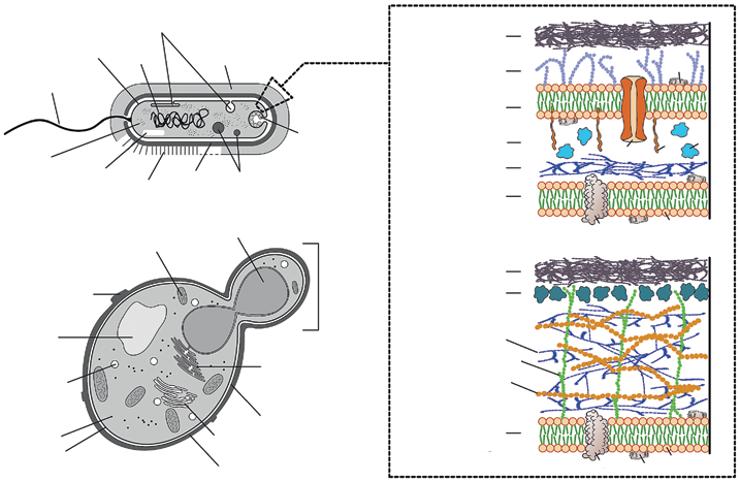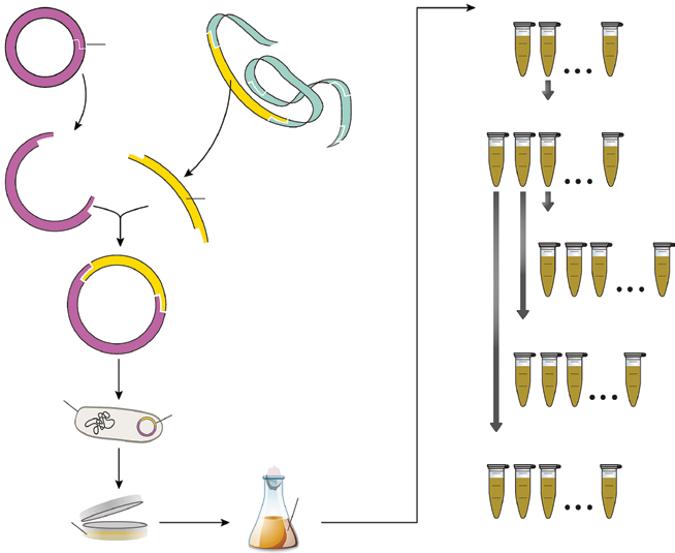Fermentation Processes
Emerging and Conventional Technologies
Edited by Mohamed Koubaa
ESCOM, UTC, EA 4297 TIMR, Compiègne, France
Francisco J. Barba
Faculty of Pharmacy, Preventive Medicine and Public Health, Food Science, Toxicology and Forensic Medicine Department, Universitat de València, València, Spain
Shahin Roohinejad
Burn & Wound Healing Research Center, Shiraz University of Medical Science, Shiraz, Iran
This edition first published 2021 © 2021 John Wiley & Sons Ltd
All rights reserved. No part of this publication may be reproduced, stored in a retrieval system, or transmitted, in any form or by any means, electronic, mechanical, photocopying, recording or otherwise, except as permitted by law. Advice on how to obtain permission to reuse material from this title is available at http://www.wiley.com/go/permissions.
The right of Mohamed Koubaa, Francisco J. Barba, and Shahin Roohinejad to be identified as the authors of the editorial material in this work has been asserted in accordance with law.
Registered Offices
John Wiley & Sons, Inc., 111 River Street, Hoboken, NJ 07030, USA
John Wiley & Sons Ltd, The Atrium, Southern Gate, Chichester, West Sussex, PO19 8SQ, UK
Editorial Office
The Atrium, Southern Gate, Chichester, West Sussex, PO19 8SQ, UK
For details of our global editorial offices, customer services, and more information about Wiley products, visit us at www.wiley.com.
Wiley also publishes its books in a variety of electronic formats and by print-on-demand. Some content that appears in standard print versions of this book may not be available in other formats.
Limit of Liability/Disclaimer of Warranty
While the publisher and authors have used their best efforts in preparing this work, they make no representations or warranties with respect to the accuracy or completeness of the contents of this work and specifically disclaim all warranties, including without limitation any implied warranties of merchantability or fitness for a particular purpose. No warranty may be created or extended by sales representatives, written sales materials or promotional statements for this work. The fact that an organization, website, or product is referred to in this work as a citation and/or potential source of further information does not mean that the publisher and authors endorse the information or services the organization, website, or product may provide or recommendations it may make. This work is sold with the understanding that the publisher is not engaged in rendering professional services. The advice and strategies contained herein may not be suitable for your situation. You should consult with a specialist where appropriate. Further, readers should be aware that websites listed in this work may have changed or disappeared between when this work was written and when it is read. Neither the publisher nor authors shall be liable for any loss of profit or any other commercial damages, including but not limited to special, incidental, consequential, or other damages.
Library of Congress
Cataloging-in-Publication
Data
Names: Koubaa, Mohamed, editor. | Barba, Francisco (Francisco J.), editor. | Roohinejad, Shahin, editor.
Title: Fermentation processes : emerging and conventional technologies / edited by Mohamed Koubaa, Francisco J. Barba, Shahin Roohinejad.
Description: Hoboken, NJ : Wiley-Blackwell, [2020] | Includes bibliographical references and index.
Identifiers: LCCN 2020031691 (print) | LCCN 2020031692 (ebook) | ISBN 9781119505853 (cloth) | ISBN 9781119505846 (adobe pdf) | ISBN 9781119505839 (epub)
Subjects: LCSH: Fermentation.
Classification: LCC QR151 .F449 2020 (print) | LCC QR151 (ebook) | DDC 572/.49–dc23
LC record available at https://lccn.loc.gov/2020031691
LC ebook record available at https://lccn.loc.gov/2020031692
Cover Design: Wiley
Cover Image: Courtesy of Mohamed Messaoud
Set in 9.5/12.5pt STIXTwoText by SPi Global, Pondicherry, India
Contents
About the Editors ix
List of Contributors xi
Preface xiv
1 Introduction to Conventional Fermentation Processes 1 Mohamed Koubaa
1.1 Bioprocesses 1
1.1.1 Production of Microbial Biomass 2
1.1.2 Production of Microbial Metabolites 3
1.1.3 Production of Microbial Enzymes 3
1.1.4 Production of Recombinant Proteins 3
1.1.5 Production of Microbial Plasmids 4
1.1.6 Bioconversion 4
1.2 Energetic Metabolism 4
1.2.1 Energy Transfer and Redox Reactions 6
1.2.2 Aerobic Respiration 6
1.2.2.1 Glycolysis Pathway 6
1.2.2.2 Citric Acid Cycle 8
1.2.2.3 Electron Transport Chain and Oxidative Phosphorylation 8
1.2.3 Anaerobic Respiration 9
1.2.4 Fermentation 9
1.3 Microorganisms Used in Fermentation Processes 10
1.3.1 Bacteria 12
1.3.1.1 The Proteobacteria 12
1.3.1.2 The Gram-Positive Eubacteria 12
1.3.2 Fungi 13
1.4 Fermentation Technology 15
1.5 Conclusions 19
References 19
2 Current Developments in Industrial Fermentation Processes 23 Mehrdad Niakousari, Maryam Razmjooei, Maryam Nejadmansouri, Francisco J. Barba, Krystian Marszałek, and Mohamed Koubaa
2.1 Introduction 23
2.2 Main Achievements in Industrial Fermentation 24
2.2.1 Fermentation Processes in Food Industry 24
2.2.1.1 Alcoholic Beverages 32
2.2.1.2 Enzymes 33
2.2.2 Fermentation Processes in Chemical Industry 34
2.2.2.1 Biofuels 38
2.2.2.2 Organic Acids 38
2.2.2.3 Triacylglycerols and Polyhydroxyalkanoates 43
2.2.2.4 Syngas Fermentation 43
2.2.3 Fermentation Processes in the Pharmaceutical Industry 45
2.2.3.1 Drugs 45
2.2.3.2 Recombinant Proteins 46
2.3 Current Developments in Industrial Fermentation 48
2.3.1 Microorganisms 48
2.3.2 Fermentation Media 53
2.3.2.1 Types of Media Sources 53
2.3.3 Fermentation Systems 56
2.3.3.1 Solid-State Fermentation Bioreactors 56
2.3.3.2 Ultrasonic Fermentation Process 60
2.3.3.3 Electrofermentation 62
2.3.4 Fermentation Optimization 63
2.3.5 Fermentation Process Modeling 69
2.3.5.1 Mechanistic Models 69
2.3.5.2 Computational fluid dynamics 72
2.3.6 Inhibition of Fermentation Processes 72
2.3.6.1 Substrate Inhibition 72
2.3.6.2 pH Inhibition 78
2.3.6.3 Inhibition by Undissociated Acids 78
2.3.6.4 Temperature Inhibition 78
2.3.6.5 Nitrogen Inhibition 78
2.3.6.6 Inhibition by Phosphate 79
2.3.6.7 Inhibition by Sulfide 79
2.3.6.8 Inhibition by Lactic Acid Bacteria 79
2.3.6.9 Inhibition by Metals 79
2.3.6.10 Inhibition by Phenolic and Furanic Mixtures 79
2.4 Conclusions 80 References 80
3 Culture Condition Changes for Enhancing Fermentation Processes 97
Marina Al Daccache, Nicolas Louka, Richard G. Maroun, and Dominique Salameh
3.1 Introduction 97
3.2 Culture Media Used for Fermentation 98
3.2.1 The Culture Media Purpose 98
3.2.2 Media Types 99
3.2.2.1 Synthetic Media 100
3.2.2.2 Semi‐synthetic Media 100
3.2.2.3 Complex Media 100
3.2.2.4 Defined Mineral Media 100
3.2.3 Culture Media: A Quantitative Approach 101
3.2.4 Culture Media: A Compositional Approach 102
3.2.4.1 Water 102
3.2.4.2 Energy Sources 103
3.2.4.3 Carbon Sources 104
3.2.4.4 Examples of Commonly Used Carbon Sources 104
3.2.4.5 Nitrogen Sources 105
3.2.4.6 Minerals 106
3.2.4.7 Chelators 106
3.2.4.8 Growth Factors 106
3.2.4.9 Buffers 107
3.2.4.10 Precursors and Metabolic Regulators to Media 107
3.2.4.11 Precursors and Inhibitors 107
3.2.5 Impact of Culture Conditions on Fermentation Processes 107
3.2.5.1 The Temperature 107
3.2.5.2 The pH 107
3.2.5.3 The Cell Concentration 108
3.2.5.4 The Carbon Dioxide 108
3.2.5.5 The Ethanol 108
3.3 Metabolic Approaches 108
3.3.1 Pasteur Effect 108
3.3.2 Crabtree Effect 109
3.3.3 Custer Effect 109
3.3.4 Oxygen Requirements 111
3.3.5 Oxygen Function in Fermentation 111
3.4 Conclusions 114 References 114
4 Emerging Technologies and Their Mechanism of Action on Fermentation 117 Krystian Marszałek, Łukasz Woźniak, Artur Wiktor, Justyna Szczepańska, Sylwia Skąpska, Dorota Witrowa-Rajchert, Jorge A. Saraiva, Jose M. Lorenzo, and Francisco J. Barba
4.1 Introduction 117
4.2 HHP Processing 117
4.3 Ultrasound 122
4.4 Pulsed Electric Fields 126
4.5 Microwaves 130
4.6 Conclusions 136 Acknowledgments 136 References 136
5 Biomass Fractionation Using Emerging Technologies 145
Mahdi Irani, Alireza Rafati, Seyedeh-Sara Hashemi, Francisco J. Barba, Mohamed Koubaa, and Shahin Roohinejad
5.1 Introduction 145
5.2 Ultrasound Application for Biomass Fractionation 146
5.3 Microwave Application for Biomass Fractionation 150
5.4 PEF Application for Biomass Fractionation 154
5.5 Enzyme-Assisted Fractionation of Biomass 156
5.6 SCF Fractionation of Biomass 160
5.7 Conclusions 163
References 163
6 Enhancing Microbial Growth Using Emerging Technologies 171 Maria J. Mota, Rita P. Lopes, Ana M. Gomes, Ivonne Delgadillo, and Jorge A. Saraiva
6.1 Introduction 171
6.2 Microbial Stimulation Using EFs 172
6.3 Stimulation Using US 177
6.4 Microbial Stimulation Using HP 181
6.5 Conclusions 185
Acknowledgments 186
References 186
7 Application of Fermentation to Recover High-Added Value Compounds from Food By-Products: Antifungals and Antioxidants 195
Sucheta Khubber, Francisco J. Marti-Quijal, Igor Tomasevic, Fabienne Remize, and Francisco J. Barba
7.1 Introduction 195
7.2 Food Industry By-Products and Global Estimates 196
7.3 Food By-Products as Sources of Antifungals or Antioxidants 198
7.3.1 Fruit 199
7.3.2 Cereals 200
7.3.3 Dairy Products 201
7.3.4 Meat 201
7.3.5 Seafood 202
7.4 Fermentation as a Strategy for Food By-Product Valorization 203
7.5 Recovery of High-Added Value Compounds from Food By-Products 204
7.5.1 Plant-Derived 204
7.5.2 Dairy Foods 206
7.5.3 Animal Foods 207
7.6 Technical and Economical Hurdles in Fermentation Assisted Recovery 208
7.7 Conclusions and Future Outlook 209
References 209
Index 220
About the Editors
Mohamed Koubaa
Dr. Mohamed Koubaa is an assistant professor in process and chemical engineering at ESCOM Chimie (Ecole Supérieure de Chimie Organique et Minérale) in Compiègne (France). He obtained an engineering diploma in biological sciences in 2007 from the National School of Engineers of Sfax (Tunisia), followed by a master’s degree from the University of Technology of Compiègne (France). In July 2008, he received a full doctoral scholarship award from the Ministry of Higher Education, Research, and Innovation (France), and graduated in February 2012. He has performed different postdoctoral research stays as a research assistant in the Department of Industrial Process Engineering, University of Technology of Compiègne (France), the Department of Biological Engineering, National School of Engineers of Sfax (Tunisia), and as a postdoctoral research assistant in the prestigious Department of Molecular Genetics, The Ohio State University, Columbus, Ohio (USA). His research focus is on the use of nonconventional processing for the preservation and/or the extraction of bioactive compounds from liquid and solid foods and more recently in microbial growth stimulation by using emerging technologies. He has more than 100 publications (book chapters and articles in peer-reviewed international journals) to his credit.
Francisco J. Barba
Dr. Francisco J. Barba is an associate professor in Nutrition and Food Science and Technology, Faculty of Pharmacy, University of Valencia, Spain. He holds a European PhD (with distinction) from the University of Valencia and has obtained degrees in Pharmacy, Food and Technology. He performed postdoctoral stays in the Université de Technologie de Compiègne (UTC), Département de Génie des Procédés Industriels, Laboratoire Transformations Intégrées de la Matière Renouvelable (Compiegne, France), and Marie Curie IEF in the Department of Food Chemistry (University of Copenhagen) to explore different non-thermal applications for preserving and extracting bioactive compounds from plant food materials and by-products. Prior to his current appointment, he was also engaged as a visiting researcher in the Department of Food Biotechnology and Food Process
Engineering in Technological University of Berlin, Germany. His research focus is on innovative food processing technologies such as high-pressure processing, supercritical fluids, electrotechnologies, ultrasound, and microwaves for preservation and/or extraction of bioactive compounds from liquid and solid food. He has more than 300 publications to his credit, including more than 250 published or accepted peer-reviewed papers in international journals in the food science and technology area (h-index = 53, SCOPUS). He has been included in the Highly Cited Researchers 2019, 2020 list, the latest classification of the Clarivate Analytics bibliometric data provider. Dr. Barba currently serves as associate editor for prestigious journals such as Food Research International, Journal of Food Composition and Analysis, Journal of Food Processing and Preservation, Antioxidants, Foods, Molecules, and Frontiers in Nutrition, among others.
Shahin Roohinejad
Dr. Shahin Roohinejad obtained his BSc in 2000 in the field of food science and technology from the Islamic Azad University, Iran. He completed his MSc in food biotechnology at the University Putra Malaysia (UPM) in 2009. In July 2011, he received a full doctoral scholarship award from the Department of Food Science at the University of Otago in New Zealand and graduated in December 2014. In 2015, he received the Georg Forster Research Fellowship Award granted by the Alexander von Humboldt Foundation to pursue his postdoctoral research at the Department of Food Technology and Bioprocess Engineering, Max Rubner-Institut (MRI), the German Federal Research Institute of Nutrition and Food. He joined the Department of Food Science and Nutrition, University of Minnesota as a Postdoctoral Research Associate in 2017. Followingly he started to work as a Research Scientist at Tillamook County Creamery Association in Oregon, USA in 2018. Currently, he is a Senior Scientist - Next Generation Oral Products at Reynolds American Inc., USA. He is a professional member of the Institute of Food Technologists (IFT), a member of IFT Press Advisory Group, and a Global Harmonization Initiative Ambassador in the USA. In the last 15 years, he has been working on different food areas such as fermentation, emerging food processing, emulsion-based systems, nanotechnology, and functional foods. His research activities have resulted in more than 100 original papers in peer-reviewed journals, book chapters, abstracts, and short papers in congress proceedings.
List of Contributors
Marina Al Daccache
Faculté des Sciences, Centre d’Analyses et de Recherche, UR TVA, Laboratoire
CTA, Université Saint-Joseph, Beyrouth, Lebanon
Francisco J. Barba
Faculty of Pharmacy, Preventive Medicine and Public Health, Food Science, Toxicology and Forensic Medicine Department, Universitat de València, València, Spain
Ivonne Delgadillo
Escola Superior de Biotecnologia, Universidade Católica Portuguesa, Porto, Portugal
LAQV-REQUIMTE, Department of Chemistry, University of Aveiro, Aveiro, Portugal
Ana M. Gomes
Escola Superior de Biotecnologia, Universidade Católica Portuguesa, Porto, Portugal
Seyedeh-Sara Hashemi
Burn & Wound Healing Research Center, Shiraz University of Medical Science, Shiraz, Iran
Mahdi Irani
Department of Food Science and Technology, Ferdowsi University of Mashhad (FUM), Mashhad, Iran
Sucheta Khubber
Food Engineering and Nutrition, Center of Innovative and Applied Bioprocessing, Mohali, India
Mohamed Koubaa
ESCOM, UTC, EA 4297 TIMR, Compiègne, France
Rita P. Lopes
LAQV-REQUIMTE, Department of Chemistry, University of Aveiro, Aveiro, Portugal
Jose M. Lorenzo
Centro Tecnológico de la Carne, Parque Tecnológico de Galicia, Ourense, Spain
Nicolas Louka
Faculté des Sciences, Centre d’Analyses et de Recherche, UR TVA, Laboratoire
CTA, Université Saint-Joseph, Beyrouth, Lebanon
Richard G. Maroun
Faculté des Sciences, Centre d’Analyses et de Recherche, UR TVA, Laboratoire
CTA, Université Saint-Joseph, Beyrouth, Lebanon
Krystian Marszałek
Department of Fruit and Vegetable Product Technology, Prof. Wacław Dąbrowski
Institute of Agricultural and Food Biotechnology, Warsaw, Poland
istoo ootributors xii
Department of Food Technology and Human Nutrition, Institute of Food Technology and Nutrition, College of Natural Science, University of Rzeszow, Rzeszow, Poland
Francisco J. Marti-Quijal
Faculty of Pharmacy, Preventive Medicine and Public Health, Food Sciences, Toxicology and Forensic Medicine
Department, Universitat de València, València, Spain
Maria J. Mota
LAQV-REQUIMTE, Department of Chemistry, University of Aveiro, Aveiro, Portugal
Maryam Nejadmansouri
Department of Food Science and Technology, College of Agriculture, Shiraz University, Shiraz, Iran
Mehrdad Niakousari
Department of Food Science and Technology, College of Agriculture, Shiraz University, Shiraz, Iran
Alireza Rafati
Division of Pharmacology & Pharmaceutical Chemistry, Sarvestan Branch, Islamic Azad University, Sarvestan, Iran
Maryam Razmjooei
Department of Food Science and Technology, College of Agriculture, Shiraz University, Shiraz, Iran
Fabienne Remize
UMR QualiSud, Université de La Réunion, CIRAD, Université Montpellier, Institut Agro, Université d’Avignon, Sainte Clotilde, France
Shahin Roohinejad
Burn & Wound Healing Research Center, Shiraz University of Medical Science, Shiraz, Iran
Dominique Salameh
Faculté des Sciences, Centre d’Analyses et de Recherche, UR ‐ EGP, Laboratoire
E2D, Université Saint-Joseph, Beyrouth, Lebanon
dominique.salameh@usj.edu.lb
Faculté des Sciences, Centre d’Analyses et de Recherche, UR - EGP, Laboratoire
E2D, Université Saint-Joseph, Beyrouth, Lebanon
Jorge A. Saraiva
QOPNA, Chemistry Department, University of Aveiro, Aveiro, Portugal
LAQV-REQUIMTE, Department of Chemistry, University of Aveiro, Aveiro, Portugal
Sylwia Skąpska
Department of Fruit and Vegetable Product Technology, Institute of Agricultural and Food Biotechnology, Warsaw, Poland
Justyna Szczepańska
Department of Fruit and Vegetable Product Technology, Institute of Agricultural and Food Biotechnology, Warsaw, Poland
Igor Tomasevic
Faculty of Agriculture, University of Belgrade, Belgrade, Serbia
Artur Wiktor
Faculty of Food Sciences, Department of Food Engineering and Process Management, Warsaw University of Life Sciences (WULS-SGGW), Warsaw, Poland
Dorota Witrowa-Rajchert
Faculty of Food Sciences, Department of Food Engineering and Process Management, Warsaw University of Life Sciences (WULS-SGGW), Warsaw, Poland
Łukasz Woźniak
Department of Fruit and Vegetable Product Technology, Institute of Agricultural and Food Biotechnology, Warsaw, Poland
Preface
Bioprocesses find many traditional or new applications in the agri-food, chemical, pharmaceutical, and environmental industries. Enhancing these processes for better production of microbial biomass and/or products has interested many scientists in the last two decades. One of the strategies consists of changing the medium composition or the fermentation parameters (e.g. oxygenation, agitation, temperature, etc.), most of the time via a design of experiment approach. Besides, some emerging technologies (e.g. pulsed electric fields, ultrasounds, high hydrostatic pressure, microwaves, etc.) have shown their efficiency to enhance the fermentation processes. These technologies when applied at high intensities cause cell disintegration and find their applications in bioprocesses, for example, to produce sugar monomers from lignocellulosic biomass. Nonetheless, their application at sublethal levels may induce stress of microorganisms and affect the microbial growth and the formation of the products during fermentation. The beneficial effects of microbial stimulation by emerging technologies include mainly the shortening of the fermentation time, the acceleration of the substrate consumption, and the increase of the microbial biomass.
This book covers the principles of conventional fermentation processes, the major microorganisms used in bioprocesses, their implementation in industrial fermentation processes, the medium condition changes, and the use of emerging technologies for enhancing the fermentation processes. Besides, the mechanisms of action of the above-mentioned emerging technologies are discussed.
This book is designed to assist scientists working on fermentation processes as well as those working in the food, nutraceutical, pharmaceutical, and beverage industries. The topics covered in this book are suitable for teaching in courses such as bioprocess technology, microbiology, new product development, and food processing.
We gratefully acknowledge the contribution of colleagues from all around the world, the cover designer Mohamed Messaoud, and the professional assistance provided by the staff of Wiley.
Mohamed Koubaa, Francisco J. Barba, and Shahin Roohinejad
Introduction to Conventional Fermentation Processes
Mohamed Koubaa ESCOM, UTC, EA 4297 TIMR, Compiègne, France
1.1 Bioprocesses
Bioprocesses represent all the methods and techniques that use microbial, plant, or animal cells or their components (e.g. enzymes, proteins, genes, etc.) for the production of goods and services (Sindhu et al. 2017). Bioprocess technology is, in fact, an extension of the ancestral techniques used at the time to develop useful products (Kalaichelvan and Pandi 2019). Nowadays, microbial cells are not only used in common processes, such as for the production of alcoholic beverages (e.g. wine, beer, etc.) or dairy products (e.g. yogurt, cheese, etc.), but also to produce a wide diversity of complex molecules. In this sense, bioprocesses find many traditional or new applications in the following industries:
● Agri-food industry: production of animal proteins, amino acids, fermented foods and beverages, vitamins, enzymes, etc.
● Chemical industry: production of organic acids, ethanol, solvents, polymers, biogas, etc.
● Pharmaceutical industry: production of antibodies, vaccines, hormones, plasmids, steroids, etc.
● Environmental industry: decontamination of wastewater, air, and soil; development of agricultural and industrial by-products, etc.
In this respect, bioprocesses are exploited in three specific fields: fermentation processes, animal and plant cell cultures, and environmental bioprocesses. This chapter will mainly focus on conventional fermentation processes.
Most of the methods and techniques used in bioprocesses are based on fermentation technology. This is not surprising since the first ancestral processes were based on microbial fermentation. For most people, fermentation simply refers to the production of alcohol (beer and wine) or the deterioration of food by microorganisms (curd). Nevertheless, the word fermentation takes on a broader common industrial meaning. It is any process for producing a substance or biomass of cells on a large scale by using the culture of a microorganism, in aerobic or anaerobic conditions.
Fermentation Processes: Emerging and Conventional Technologies, First Edition. Edited by Mohamed Koubaa, Francisco J. Barba, and Shahin Roohinejad.
© 2021 John Wiley & Sons Ltd. Published 2021 by John Wiley & Sons Ltd.
To be able to carry out these fermentations, it is imperative to cultivate microorganisms in tanks equipped with a certain number of more or less sophisticated systems; these tanks are called fermenters or bioreactors. Their role is to provide a controlled environment for optimal growth of microbial cells throughout the culture by constantly stirring the medium, infusing sterile air – in the case of aerobic fermentation – and controlling the temperature and pH of the fermentation broth. By using these tanks, contamination by other microorganisms is avoided by constantly maintaining asepsis conditions.
The first modern fermenters were designed in the 1950s to support the industrial production of penicillin and other newly discovered antibiotics. Since then, they have been able to control several other types of crops and to substantially increase the quantity of products marketed in each of the three fields of application of industrial bioprocesses mentioned above. Six major groups of products could then be obtained by fermentative processes, namely the production of (i) microbial biomass, (ii) microbial metabolites, (iii) microbial enzymes, (iv) recombinant proteins, (v) microbial plasmids, and (vi) bioconversion.
1.1.1 Production of Microbial Biomass
Commercial production of microbial biomass can be divided into two major processes: the production of viable microorganisms used primarily for fermentative applications (Vitorino and Bessa 2017) and the production of microbial cells, usually dead, that can serve as protein-rich supplements (Matassa et al. 2016).
In the first case, we can cite several examples: the production of bakery yeasts for the production of bread, the production of yeasts to perform alcoholic fermentation (e.g. beers, wines, spirits, etc.), and the production of lactic acid bacteria for the manufacturing of cheese, yogurt, fermented meats (i.e. sausages), or fermented vegetables (e.g. sauerkraut, marinated pickles, etc.). Some food supplements composed of live lactic acid bacteria, also called probiotics, are produced by fermentation. They can be defined as live microorganisms, and the adequate amounts of them supply a health benefit to the host (Otles and Ozyurt 2019). Their role is to exert a beneficial effect by improving the quality of the intestinal flora. These microorganisms are usually supplied as a lyophilized powder in hermetically sealed sterile bags or containers. Generally, the name of ferments is given to microorganisms that serve to start a fermentation process (Koutinas 2017). Some microbial strains such as the bacterium Bacillus thuringiensis, whose spores produce a very effective toxin against pest larvae (biological insecticide), are also grown.
In the second case, it is a question of producing microbial biomass to exploit the nutritional potential of the proteins that it produces (Matassa et al. 2016). This biomass is incorporated into prepared foods to increase their protein content without significant fat intake, which improves their nutritional quality. The yeast Candida utilis is mostly used as a dietary supplement because of its exceptionally high protein content (50–55% of dry weight). This yeast can be used as a valuable raw material to produce various preparations enriched with valuable bioelements (e.g. selenium, magnesium, etc.). The use of such preparations in the human diet provides an interesting alternative to classical, pharmacological supplementation and prevents deficits of important elements, while their addition to feedstock significantly improves the results of animal production (Kieliszek et al. 2017).
1.1.2
Production of Microbial Metabolites
Microorganisms are characterized by a variety of metabolic pathways that allow them to synthesize a host of organic compounds, called metabolites, many of which are potentially useful. In this type of fermentation, it is sought to produce by the metabolic activity of a microorganism a substance that is too complex to be chemically synthesized at a reasonable cost (Jeandet et al. 2013).
Metabolites are generally divided into two categories depending on whether they are produced in relation to growth or not. The first ones are called primary metabolites and are produced in large enough quantities during the exponential growth phase by essential metabolic pathways that are common to many microorganisms. Several primary metabolites produced by fermentation are the residues of the energetic catabolism of microorganisms. These are mainly alcohols, solvents, and organic acids used in food or the chemical industry. Others are derived from cellular anabolism. These are mostly amino acids and vitamins produced for food or pharmaceutical purposes (Sanchez and Demain 2009).
The second ones are called secondary metabolites and are usually produced in small quantities during the stationary phase, and sometimes even during the decline phase, by particular metabolic pathways that are exclusive to a few species and usually give them a survival advantage in the wild. Secondary metabolites form an extremely heterogeneous group of compounds, derived from anabolism, whose main uses are in pharmaceuticals (e.g. antibiotics, growth factors, enzyme inhibitors, etc.). Although not essential for microbial growth, secondary metabolites are very important for health, nutrition, and the economics of our societies (Bérdy 2005).
1.1.3 Production of Microbial Enzymes
Enzymes are proteins that act as catalysts in the biochemical reactions of metabolism (Cooper 2000). When purified, they make it possible to carry out these reactions under controlled conditions. They can be produced from animal, plant, and microbial cells. Nevertheless, microbial enzymes stand out in large quantities and often at low cost by fermentation processes (Raveendran et al. 2018). Most enzymes produced by fermentation are associated with primary metabolism and are primarily used in the agri-food industry to process many foods; however, more and more enzymes associated with secondary metabolism are produced for pharmaceutical purposes.
1.1.4 Production of Recombinant Proteins
Nowadays, the advances in genetic engineering techniques allow introducing genes from animal and plant cells into microorganisms. These genetically modified cells will produce the so-called recombinant proteins because their synthesis relies on the recombination of microbial DNA with foreign DNA (Griffiths et al. 2000). Several microbial species have been selected as hosts for such productions (e.g. Escherichia coli, Saccharomyces cerevisiae, Yarrowia lipolytica, etc.). The research and development effort required to develop such strains is, however, colossal, and the recombinant proteins produced by fermentation are therefore almost all dedicated to pharmaceutical uses (e.g. human insulin, human growth hormone, etc.).
1.1.5 Production of Microbial Plasmids
There has been a marked interest in the production of plasmids by fermentation (Carnes and Williams 2014; Carnes et al. 2006). Plasmids are self-replicating extrachromosomal DNA molecules found in Gram-negative and Gram-positive bacteria as well as in some yeast and other fungi (Actis et al. 1999). To produce appreciable amounts, it is first necessary to introduce a plasmid of interest into microbial cells such as E. coli or S. cerevisiae Subsequently, culturing these microorganisms in a bioreactor develops significant biomass. The plasmids then replicate independently in the new cells produced, and at the end of the fermentation, they are recovered and purified (Carnes and Williams 2014).
First developed in research programs in molecular biology and genetic engineering, plasmids are todays used in new applications of high technology such as in gene therapy (Sousa et al. 2009). Indeed, plasmids obtained by fermentation may contain therapeutic genes derived from the recombination of DNA that will be used to produce previously defective or nonexistent proteins to correct a genetic abnormality in a human organ. These plasmids are inserted into synthetic vectors and injected into the target cells of the affected organ by using particular techniques.
1.1.6 Bioconversion
A microbial cell can be used to convert or transform any substance into a value-added product (Garlapati et al. 2016), a bit like conventional conversions of grape must into wine, wine into vinegar, or milk into yogurt. These transformations contribute to producing very valuable compounds in the pharmaceutical industry, such as antibiotics, vitamins, steroids, and prostaglandins. These conversions are based on the biochemical reactions of microorganisms used such as hydroxylation, dehydroxylation, O-methylation, O-demethylation, glycosylation, deglycosylation, dehydrogenation, hydrogenation, C-ring cleavage of the benzo-γ-pyrone system, cyclization, and carbonyl reduction (Cao et al. 2015).
The bioconversion of compounds by microorganisms is much more advantageous than the conventional chemical transformation because the reactions can occur at low temperature and low pressure and without the addition of catalysts. To understand the different steps required to carry out a fermentation process, it is of paramount importance to understand first the microbial metabolism and how a substrate could be transformed by a microorganism to maintain its growth and the production of targeted compounds.
1.2 Energetic Metabolism
Microorganisms need energy and carbon for their metabolism and are classified as autotrophs and heterotrophs depending on the sources of energy and nutrients (Misra 2011). There are only two sources of energy metabolizable by the cells: light energy captured during photosynthesis and energy from the oxidation of organic and inorganic molecules. Nevertheless, cells can be categorized into nutritional categories depending on how they meet these needs. In bioprocesses, three of these classes are potentially exploited on an industrial scale: phototrophs, chemolithotrophs, and chemoorganotrophs (Jurtshuk 1996).
Phototrophs use light as a source of energy and carbon dioxide (CO2) as a source of carbon. They include photosynthetic bacteria (cyanobacteria), algae, and green plants. Chemolithotrophs rely on electrons from reduced inorganic compounds, such as iron, nitrogen, or sulfur, as a source of energy (oxidation of the inorganic material) and CO2 as a carbon source. They include several bacterial species that are primarily used in environmental bioprocesses, particularly in aerobic wastewater treatment. The chemoorganotrophs use, as a source of energy, electrons from hydrogen atoms that are part of organic compounds (oxidation of organic matter), which also serve as a carbon source. They are the ones who enter the vast majority of bioprocesses, particularly in fermentation processes (bacteria, yeasts, and molds) and in animal cell cultures. The next sections will discuss the metabolism of this class of cells.
All living organisms need energy to grow and reproduce. In chemoorganotrophs, this energy is obtained during the degradation of organic compounds. Mainly, carbohydrates, lipids, and proteins are oxidized to release the chemical energy they contain. This energy will be then transferred to adenosine diphosphate (ADP) and inorganic phosphate (Pi) molecules before being stored in the form of adenosine triphosphate (ATP) (Figure 1.1). ADP and ATP correspond to molecules of adenosine monophosphate (AMP) plus one and two high-energy phosphates (AMP ~ P and AMP ~ P ~ P, respectively). The energy is stored in these compounds as high-energy phosphate bonds. All living cells must maintain steady-state biochemical reactions for the formation and use of such high-energy compounds.
Biochemical assimilation (anabolism) and dissimilation (catabolism) of nutrients by a chemoorganotroph are mediated by a network of enzymatic reactions perfectly synchronized and regulated. Anabolic pathways consist mainly of the reductive processes that lead to producing new cellular molecules, while catabolic pathways include the oxidative processes involved in removing electrons from substrates or intermediates that are used to generate energy.
Figure 1.1 Energy coupling and the role of ATP in microbial metabolism. ADP: adenosine diphosphate, ATP: adenosine triphosphate
1.2.1 Energy Transfer and Redox Reactions
The energy released by the catabolic reactions is associated with the electrons of molecules that are degraded during these reactions. This energy is transferred to a molecule of ADP to form ATP. More specifically, a phosphate group is added to the ADP molecule, with an energy investment, to form an ATP molecule (Figure 1.1). The energy contained in organic molecules cannot be released all at once; otherwise, it would be practically all lost in the form of heat, as during combustion. It must, therefore, be gradually transferred to the ATP molecules via the cascades of redox reactions.
First, the energetic nutrients are oxidized, which allow them to behave as electron donors (e ). During this reaction, two electrons and two protons (H+) are transferred to a coenzyme known as nicotinamide adenine dinucleotide (NAD+) to be reduced in the form of NADH + H+. A part of the chemical energy contained in nutrients is then transferred to the NAD+ by the electrons, according to the reduction reaction in Eq. (1.1).
Overall, each time an organic molecule is oxidized (the loss of electrons and H+ ions), there is simultaneously a reduction of NAD+ taking place. This is why we talk about “redox reactions.” The newly formed NADH will then undergo oxidation, in turn, to release stored energy (Eq. (1.2)), which will eventually be transferred to ATP molecules by various chemical processes.
At the end of the energy transfer process, the released electrons and protons (H+) must be picked up by a final acceptor. This acceptor will vary according to the preferred catabolic pathway: aerobic respiration, anaerobic respiration, or fermentation.
1.2.2 Aerobic Respiration
In this catabolic pathway, the final electron acceptor is molecular oxygen (O2), and the organisms using it are, therefore, dependent on air for their survival. It takes place in three stages, each involving a series of chemical reactions: glycolysis, citric acid cycle, and electron transport chain.
1.2.2.1 Glycolysis Pathway
In the glycolytic pathway, occurring in all tissues, glucose is oxidized to provide energy (i.e. ATP) and intermediates for other cellular metabolic pathways. Glycolysis is at the hub of carbohydrate metabolism where glucose is converted to pyruvate following a series of 10 enzymatic reactions (Figure 1.2). This metabolic pathway is known as aerobic glycolysis, as the reoxidation of the NADH formed during the oxidation of glyceraldehyde 3-phosphate requires O2. Aerobic glycolysis sets the stage for the oxidative decarboxylation of pyruvate to acetyl coenzyme A (acetyl-CoA), a major fuel of the tricarboxylic acid cycle (Ferrier 2017). During glycolysis, two ATP molecules are initially consumed to phosphorylate glucose, which thus receives an essential energy supply to continue the catabolic pathway.
Glucose
Glucose 6-phosphate
Phosphoglucose isomerase
Fructose 6-phosphate
Phosphofructo kinase
Fructose 1,6-bisphosphate
Triose phosphate isomerase
Dihydroxyacetone phosphate
Glyceraldehyde 3-phosphate
Glyceraldehyde 3-phosphate dehydrogenase
+Pi Hexokinase
1,3-Bishosphoglycerate
Phosphoglycerate kinase
3-Phosphoglycerate
Phosphoglycerate mutase
Glycolysis
2-Phosphoglycerate
Pyruvate kinase Enolase
Phosphoenolpyruvate
Malate dehydrogenase
CoA-SH Pyruvate dehydrogenase CO2
synthase
Citric acid cycle
dehydrogenase
Succinyl CoA synthetase
Succinyl CoA
dehydrogenase
dehydrogenase
Figure 1.2 Glycolysis and citric acid cycle pathways.
Subsequently, two molecules of NAD+ oxidize phosphorylated sugar and are reduced to NADH + H+. During these reactions, which will lead to the synthesis of two molecules of pyruvic acid from a glucose molecule, a part of the energy released allows the direct synthesis of four molecules of ATP. Considering that two molecules of ATP are consumed and four are produced, glycolysis presents a net balance of two molecules of ATP for each molecule of oxidized glucose.
1.2.2.2
Citric Acid Cycle
Pyruvic acid is first decarboxylated (release of CO2) and then oxidized by a molecule of NAD+ (reduced to NADH + H+) to form the two carbon molecules of acetyl-CoA. As two molecules of pyruvic acid are produced from a glucose molecule, two molecules of CO2, NADH + H+, and acetyl-CoA are produced. In prokaryotic cells (e.g. bacteria), the citric acid cycle (or Krebs cycle) occurs in the cytosol, while in eukaryotic organisms (e.g. yeast), it takes place in the mitochondrial matrix.
Overall, two molecules of CO2 are produced and three molecules of NAD+ are reduced to NADH + H+ during a turn of the citric acid cycle. Besides, two electrons and two protons released from pyruvic acid are used to reduce a molecule of flavin adenine dinucleotide (FAD) into FADH2, similar to that of NAD+. Finally, there is a release of chemical energy, which allows the synthesis of an ATP molecule. To summarize, for each molecule of glucose oxidized, four molecules of CO2, six molecules of NADH + H+, two molecules of FADH2, and two molecules of ATP are generated.
1.2.2.3 Electron Transport Chain and Oxidative Phosphorylation
In a process called oxidative phosphorylation, the energy stored in the reduced coenzymes (NADH and FADH2) is released to produce ATP molecules. During this process, each coenzyme is oxidized and gives its two energy-rich electrons to an electron transport chain, or respiratory chain, located in the plasma membrane in prokaryotes and the inner membrane of mitochondria in eukaryotes. The chain consists of complex organic acceptors that transfer electrons through a series of redox reactions (Figure 1.3). As the electrons are transferred in this chain, the energy that they contain is released by stages and is used to activate chemiosmosis. This creates a gradient of H+ protons whose energy is reinvested, through the enzyme ATP synthetase, in the production of three molecules of ATP per molecule of oxidized NADH and two molecules of ATP per molecule of oxidized FADH2.
FADH2
Figure 1.3 The electron transport chain showing the respiratory complexes.
At the end of the transport chain, the electrons exhausted of their energy bond with O2 and H+ ions to form a water molecule. To summarize, for each glucose molecule that enters glycolysis, 34 molecules of ATP will be produced by oxidative phosphorylation (i.e. 30 molecules coming from NADH and 4 coming from FADH2). Further reading about the electron transport chain could be found in Campbell (2015).
1.2.3 Anaerobic Respiration
Some microbial species use anaerobic respiration to obtain their energy in the absence of O2. During this process, the electrons that are removed from organic nutrients such as glucose follow the same pathways as in aerobic respiration, except that the final acceptor is not O2, but another inorganic molecule (e.g. sulfate, nitrate, etc.). The sulfate ion is generally reduced to hydrogen sulfide, while nitrate ion can be reduced to nitrite, nitrogen oxide, or molecular nitrogen. Some bacteria reduce carbonate to methane. The number of ATP molecules produced by anaerobic respiration varies from one organism to another and from one metabolic pathway to another. This number is generally less than the 38 mol of ATP generated by aerobic respiration, the energy yield is lower, and anaerobic microorganisms usually grow slower than aerobic ones.
1.2.4 Fermentation
Some microbial species can obtain their energy in the absence of O2 through the catabolic pathway of fermentation. The only difference compared to respiration is in the final electron acceptor (Angelidaki et al. 2011; Dunford 2012; Madigan et al. 2015). In this case, ATP is produced without the Krebs cycle or an electron transport chain involved. This metabolic pathway does not require O2, because ATP comes exclusively from glycolysis, and the last electron acceptor is an organic molecule such as pyruvic acid (or a derived molecule). Figure 1.4 summarizes the metabolic pathway of fermentation.
As shown in Figure 1.4, glucose is oxidized during glycolysis to form two molecules of pyruvate. The electrons and protons released during this pathway are captured by the NAD+ to be reduced to NADH + H+. As shown above, two molecules of ATP are produced during glycolysis. To regenerate the NAD+, the NADH + H+ must be reoxidized; otherwise, the oxidation of glucose will stop and glycolysis too. During this oxidation, electrons and protons are directly transferred to pyruvate or one of its derivatives. The reduction of these final electron acceptors results in the formation of many different compounds, which provide a great variety of types of fermentation. At the same time, the NAD+ is regenerated and can engage in another round of glycolysis. The goal is to provide an uninterrupted supply of NAD+, which allows uninterrupted oxidation of glucose.
During fermentation, all ATP is produced solely by glycolysis, which implies a much lower energy yield compared to aerobic respiration (2 mol of ATP against 38 in prokaryotes). Considering that glucose oxidation is partial, a large part of the energy originally contained in glucose remains stored in the chemical bonds of the final fermentation product (e.g. ethanol, lactic acid, etc.). Fermentation microorganisms must, therefore, compensate for this shortfall by the oxidation of a larger quantity of substrate.
Figure 1.4 Schematic representation of fermentation and energy generation.
Different microorganisms can metabolize organic substrates (e.g. monosaccharides, amino acids, glycerol, etc.) (Angelidaki et al. 2011) to produce organic products such as acids, alcohols, and gases (Wilkins and Atiyeh 2012). This transformation occurs when all essential conditions and factors (e.g. temperature, pH, sugar concentration, culture medium, dissolved O2, and other micronutrients) required to the growth of microorganisms are provided (Smith 2009). Besides, the microorganism used must be viable, genetically stable, and able to resist several factors including the high concentrations of substrate, salt, and product, and sometimes to the presence of inhibitors, especially when using an industrial by-product, or a lignocellulosic hydrolyzate.
Under anaerobic conditions, pyruvate is fermented to a wide range of fermentation products; most of them are of industrial importance (Figure 1.5). In general, microorganisms can be grouped into two classes according to the number of compounds that will be produced during fermentation: homofermentaries and heterofermentaries. Homofermentative microorganisms use a fermentation pathway that leads to the production of a single compound. For example, some lactic acid bacteria can oxidize glucose to produce only lactic acid. Heterofermentative microorganisms, on the other hand, use a fermentation pathway that generates several compounds after the oxidation of the substrate. For example, the bacterium E. coli can produce several types of organic acids during the fermentation of glucose. The following are among the most occurring industrial fermentative products: ethanol, lactic acid, propionic acid, butyric acid, and acetone (Eş et al. 2017; Lin et al. 2014; Navarrete-Bolaños et al. 2013; Ruijschop et al. 2008).
1.3 Microorganisms Used in Fermentation Processes
Fermentation can take place under anaerobic or aerobic conditions with the help of microorganisms (Gänzle 2015; Ghosh et al. 2015; Kutyna et al. 2012). The most used microorganisms in bioprocesses are bacteria and fungi (yeasts and molds).
Oxaloacetic acid
Acetone
Butyraldehyde
Butyryl CoA
Butyryl phosphate
Acetolactic acid
AcetoÏn Acetoacetyl-CoA
Lactic acid 2,3 - Butanediol
Propionic acid
Pyruvate
Butyric acid
Acetyl phosphate
Figure 1.5 Main terminal reactions of catabolic fermentations using pyruvate.
1.3.1 Bacteria
Bacteria are prokaryotes (Figure 1.6a) and include two distinct categories: archaebacteria or archaea (“ancient” bacteria) and eubacteria (“true” bacteria). The group containing almost all the species used in industrial bioprocesses is eubacteria (Waites et al. 2001) and will, therefore, be detailed below.
Eubacteria group could be divided into 12 subgroups: (i) Proteobacteria; (ii) Grampositive eubacteria; (iii) Cyanobacteria; (iv) Chlamydia; (v) Planctomyces and Pirella; (vi) Bacteroides and Flavobacteria; (vii) Green sulfur bacteria; (viii) Spirochetes and relatives; (ix) Deinococci, radioresistant micrococci, and relatives; (x) Green nonsulfur bacteria and anaerobic phototrophs; (xi) Thermotoga and Thermosulfobacteria; and (xii) Aquifex. Only two of them are of industrial interest: the proteobacteria and the Gram-positive eubacteria.
1.3.1.1 The Proteobacteria
This subgroup constitutes a major kingdom of Gram-negative bacteria that include purple photosynthetic and nonphotosynthetic bacteria such as the Enterobacteriaceae (e.g. E. coli), along with Pseudomonas, Hyphomicrobium, Thiobacillus, Nitrobacter, and Vibrio (Waites et al. 2001).
1.3.1.2 The Gram-Positive Eubacteria
This subgroup could be divided into two major subdivisions. The first one corresponds to the bacteria having low guanine (G) and cytosine (C) base pair content in their DNA and includes Bacillus, Staphylococcus, Leuconostoc, Streptococcus, Clostridium, Lactobacillus,
Periplasm
Lipopolysaccharide
Outer membrane
Periplasm
Peptidoglygan
Inner membrance
Capsule Protein layer
Peptidoglygan
Lipocarbohydrate
Cytoplasmic membrane 2nd wall polymer
Figure 1.6 Schematic representation of a prokaryotic cell (a) and a budding yeast cell (b). Insert represents a schematic structure of typical Gram-negative and Gram-positive cell envelopes. LPS = lipopolysaccharide; LP = lipoprotein; P = protein; PL = phospholipid; SP = surface protein; TP = transmembrane proteins.
Flagellum
Ribosomes
and Mycoplasma. The second subdivision corresponds to the bacteria having high guanine (G) and cytosine (C) base pair content in their DNA and includes the actinomycetes (filamentous bacteria, e.g. Streptomyces), Mycobacterium, Micrococcus, and Corynebacterium. The physiological difference between Gram-negative and Gram-positive bacteria is mainly in the composition of their cell envelopes (see insert in Figure 1.6).
1.3.2 Fungi
Fungi are eukaryotic microorganisms that could be divided into filamentous hyphae (also called molds) and unicellular fungi (also called yeasts). A relatively low number of filamentous fungi are used at industrial scale in bioprocesses (e.g. Acremonium, Agaricus, Aureobasidium, Aspergillus, Claviceps, Coniothyrium, Curvularia, Cylindrocarpon, Fusarium, Lentinus, Mortierella, Mucor, Paecilomyces, Penicillium, Rhizomucor, Rhizopus, Sclerotium, Trametes, Trichoderma, and Trichosporon). Filamentous fungi are chemoheterotrophs and nonphotosynthetic. Most of them secrete a wide variety of hydrolytic enzymes (e.g. cellulose, amylase, xylanase, etc.) (de Souza and de Oliveira Magalhães 2010; Payne et al. 2015; Polizeli et al. 2005) that can degrade different polymers (e.g. lignocellulosic materials) into smaller molecules (e.g. monosaccharides, disaccharides, etc.), which are easily absorbed and metabolized. Filamentous fungi germinate from either individual spore or a fragment of hyphae when exposed to suitable environmental conditions (e.g. pH, temperature, etc.). The length of hyphae can increase rapidly at rates reaching several μm/ min (Waites et al. 2001). Further reading about the filamentous fungi can be found in Quintanilla et al. (2015).
Yeasts are unicellular fungi (Figure 1.6b) with great industrial importance, notably S. cerevisiae, the major yeast used in alcoholic fermentation (see Chapter 2). Yeasts are heterotrophic, and most of them can grow in the presence and absence of O2 (facultative anaerobes), unlike most fungi. Yeasts are not nutritionally demanding as a relatively simple medium composition (e.g. reduced carbon sources, organic and inorganic nitrogen sources such as urea and ammonium salts, respectively, some minerals, and water) allows them to multiply. Sometimes, vitamins (e.g. biotin) are also supplemented to allow the optimal growth of the yeasts. Yeasts of industrial importance include the genera of Blakeslea, Candida, Hansenula, Kluyveromyces, Pachysolen, Phaffia, Pichia, Rhodotorula, Saccharomyces, Xanthophyllomyces, Yarrowia, and Zygosaccharomyces (Waites et al. 2001). Thousands of examples have been reported in the literature to describe the potential of these yeasts in different industrial sectors (Defavari do Nascimento and Pickering 2017; Drévillon et al. 2018; Koubaa et al. 2020; Peris et al. 2018).
The selection of a microbial species to perform a bioprocess does not only require its ability to synthesize a potentially useful compound or to carry out a particular metabolic pathway. Indeed, most of the industries seek strains that can meet other important criteria, which will allow the optimization of the biological process and maximize profitability. Such criteria include:
1) The ability of the strain to grow quickly on inexpensive organic substrates (e.g. molasses, corn liquor, whey, etc.);
2) The ability of the strain to perform in a simple and fast way the sought-after transformations with high efficiency and a minimum of energy consumption;
3) The strain must be genetically stable (low mutation rate) to maintain its production capacity over time;
4) The strain must be specialized in the synthesis of products that are easy to extract and separate; and
5) The strain should not be pathogenic.
Wild-type strains are usually unable to meet the above-mentioned criteria. Indeed, they often have a limited performance that must be amplified to reach the industrial requirements. In fact, wild-type microorganisms have usually metabolic regulation mechanisms, often of the negative feedback type, allowing them to produce naturally only the quantity of enzymes and metabolites they need to survive in a competitive environment. By shortcircuiting these mechanisms with genetic modifications, more productive microorganisms could be generated. Besides, the wild strain may have certain undesirable characteristics that can also be modified, such as sensitivity to a bacteriophage, the trend to generate a lot of foam in a liquid medium, or the synthesis of a by-product that is difficult to eliminate during the downstream purification steps. In all cases, there is an interest in implementing a genetic improvement program for the strain involving the use of mutations or recombinant DNA technology (Figure 1.7). Further reading about microbial transformation techniques can be found in Han (2004). The review of the literature showed hundreds of examples of genetic modifications of microbial strains toward their
Vector DNA (e.g plasmid)
Restriction site
Cleavage using restriction endonuclease
Pre-Master Cell Bank
Foreign DNA
Cleavage using restriction endonuclease
Foreign gene Ligation
Microorganism (e.g. bacterium)
Selection of transformed cells (e.g in presence on antibiotic)
Solid culture medium
Microbial transformation (e.g by electroporation)
Recombinant plasmid
culture medium
Master Cell Bank
Working Cell Bank # 1
Working Cell Bank # 2
Working Cell Bank # 3
Figure 1.7 Diagram of a typical gene cloning methodology and cell banking system preparation.
Liqiud
use in industrial bioprocesses. The major metabolic engineering achievements in the recent years include microbial production of amino acids (e.g. L-valine, L-threonine, L-lysine, and L-arginine), bulk chemicals (e.g. 1,4-butanediol, 1,4-diaminobutane, 1,5-diaminopentane, 1,3-propanediol, butanol, isobutanol, and succinic acid), and drugs (e.g. artemisinin) (Lee and Kim 2015).
1.4 Fermentation Technology
The main challenge facing bioprocess specialists is the technological transfer from the laboratory to the industrial scale. Indeed, it is usually quite simple to cultivate a microorganism in an Erlenmeyer flask containing a few hundred milliliters of culture medium. However, the same operation is much more complicated in industry, where high culture volumes are processed. Nonetheless, whether in the laboratory or the industry, certain steps must be taken to cultivate a microorganism and make it produce a molecule of commercial interest.
In this regard, the fermentation industry provides a basic model in which a sequence of steps is commonly followed in the majority of bioprocesses. Whatever the strain used and the product sought, there are six major points to take into consideration when developing an industrial fermentation:
1) The formulation of an adequate culture medium that will promote the growth of the strain used and the production of the molecule of interest;
2) Sterilization of the culture medium, the bioreactor, and accessory components to prevent another microorganism developing there and contaminating the fermentation;
3) The development of an inoculum that will be used to produce a pure culture of the selected strain in sufficiently high concentration and volume to be able to adequately inoculate the bioreactor;
4) The growth of the strain within the bioreactor, under optimal and controlled production conditions;
5) Recovery and purification of the product from the culture (i.e. downstream processing steps); and
6) The elimination of effluents and other residues from the process.
The inoculum represents the biomass (e.g. cells, spores, mycelium, etc.) required for seeding the culture in a bioreactor. On one hand, it must provide a sufficient quantity of cells in homogeneous suspension to achieve rapid growth in the bioreactor, while, on the other hand, it must be free from any microbial contamination. To achieve this, an industrial lyophilized or frozen strain from a working cell bank (Figure 1.7) is used and grown in a liquid medium stirred in an Erlenmeyer flask to obtain a significant volume of culture. This volume will be then transferred aseptically to a small bioreactor, commonly called preculture, which has the function of developing a very high and metabolically active cellular biomass concentration. These stages may require several days of work and, in the case of fermentation, are carried out in very large volumes; it is often even a real fermentation before the main fermentation. Generally, the volume of the inoculum represents between
Figure 1.8 Factory seed culture equipment. AF = air filter; FIC = flow indication control; STM = steam; TIC = temperature indication control; PIC = pressure indication control; ATM = atmosphere. Source: Oka (1999).
5 and 10% of the volume of the main bioreactor where the fermentation will take place. Seeding steps at an industrial scale are presented in Figure 1.8.
In the field of industrial fermentation bioprocesses, developing a profitable process requires the consideration of some criteria for the culture medium:
1) The environment must be as inexpensive as possible (i.e. the cost of acquiring and storing raw materials must be affordable).
2) Raw materials should be available on an annual basis and ideally in the local market.
3) The quality of the raw materials must be constant, which allows obtaining similar results in terms of yield and productivity between the different batches.
4) The substrate must demonstrate good physicochemical stability during storage.
5) The medium must be easy to sterilize by usual techniques since certain media could be viscous or very heavily loaded with solid matter that affect the sterilization efficiency.
6) The medium must have an acceptable viscosity, since a too viscous medium is unfavorable for the aeration and homogenization of the substrate, in addition to causing a higher energy demand for agitation and a greater risk of formation of unwanted foam.
7) The raw materials must be able to guarantee the quality of the finished product (i.e. be free of toxic substances) and have the lowest possible content of impurities to facilitate the recovery and purification stages at the end of the process.
Any industrial fermentation aims to produce a molecule of interest in the highest quantity, in the shortest time, and at the lowest possible cost. For this, a microorganism must be cultivated under controlled physicochemical conditions within a large volume enclosure specially designed for this purpose: the bioreactor or fermenter. One of the most used bioreactors at the industrial scale is the stirred tank type, schematized in Figure 1.9. Other types of bioreactors exist and are described in Chapter 2. Mainly, two types of bioreactors exist. The first one allows performing nonaseptic cultures such as brewing and effluent treatment, and the second one requires aseptic
conditions for successful product formation, such as antibiotics, vitamins, polysaccharides, and recombinant proteins. Aseptic bioreactors can be sterilized repeatedly and can process a large volume of culture. Several peripheral systems are coupled to the tank and allow controlling automatically the parameters affecting the microbial growth such as the temperature, the pH, and the dissolved O2. Within the bioreactor, the microorganisms are suspended in the aqueous nutrient medium containing the necessary substrates for microbial growth and product synthesis. Changing the culture conditions has a great impact on the bioprocess performances, as discussed in Chapter 3.
In a bioreactor, fermentation occurs in a multiphase state: a gas phase where CO2, O2, and N2 can be exchanged, a liquid phase mainly composed of the aqueous medium, and a solid phase mainly composed of microorganisms and solid substrates. These phases must be perfectly mixed to ensure the most efficient and homogenous heat and mass transfer. To ensure a perfect mixing of the suspension, the shaft of the bioreactor is usually equipped
Gearbox
Manway Jacket
Figure 1.9 Fermenter vessel schematic and terminology. Source: Charles (1999).
